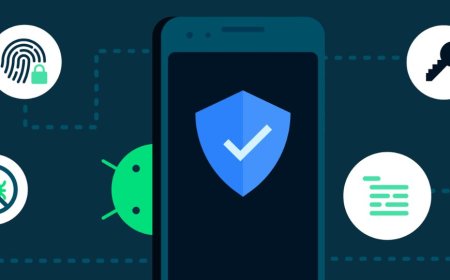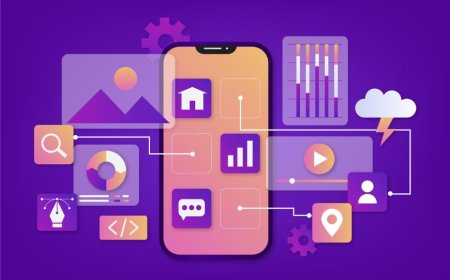Software Customization: Tailoring Programs to Your Needs
Tailor-made software solutions are at your fingertips with Tectoks. Customize programs to match your specific requirements and boost efficiency.

Table of Contents:
1. Introduction
2. How to Customize Software
3. Software Customization vs. Configuration
4. Software customization examples
5. Software Customization Services
6. Challenges and Strategies
7. Future Trends in Software Customization
8. Conclusion
1. Introduction
Have you ever wished your software could do exactly what you want it to do? Have you ever felt frustrated by the limitations of off-the-shelf products that don't meet your specific needs? If so, you might be interested in software customization.
Software customization is the process of modifying or creating software to suit your unique requirements and preferences. It can help you achieve higher efficiency, productivity, and satisfaction with your software. In this blog, we will explore what software customization is, how to do it, how it differs from software configuration, some examples of software customization, the benefits and challenges of software customization, and the future trends in this field.
What is software customization, and why is it important?
Software customization is the act of changing or developing software to fit your particular needs and wants. It can involve altering the features, functions, interface, or behavior of existing software or creating new software from scratch. Software customization can be done by yourself, by hiring a software developer, or by using a software customization service.
Software customization is important because it can help you solve problems, improve performance, and enhance the user experience. By customizing your software, you can:
- Make your software more compatible with your hardware, operating system, or other software
- Add new functionalities or remove unwanted ones
- Automate repetitive or complex tasks
- Personalize the appearance and feel of your software.
- Increase the security and privacy of your software
- Reduce the cost and maintenance of your software
2. How to Customize Software: A Step-by-Step Guide
Software customization can be done in different ways, depending on your skill level, budget, and time.
Here are some common steps to customize your software:
1. Identify your needs and goals. What would you like your software to do? What difficulties or obstacles do you want to address or overcome? What are the benefits or outcomes that you expect from your software customization?
2. Research your options. What are the existing software products that can meet your needs or goals? What are their pros and cons? How easy or difficult are they to customize? What are the tools or resources that you need to customize them?
3. Choose your approach. Based on your research, decide whether you want to modify existing software, create new software, or use a software customization service. Consider the advantages and disadvantages of each option, such as the cost, time, quality, and risk involved.
4. Plan your project. Define the scope, timeline, budget, and deliverables of your software customization project. Break down your project into manageable tasks and assign roles and responsibilities. Establish clear and reasonable expectations and express them to your stakeholders.
5. Execute your project. Follow your plan and implement your software customization. Test and debug your software regularly and ensure that it meets your specifications and standards. Document your work and track your progress and performance.
6. Evaluate your project. Once your software customization is completed, review and assess your project. Did you achieve your needs and goals? Did you follow your plan and budget? Did you encounter any problems or issues? How can you improve your software customization process and outcome?
3. Software Customization vs. Configuration: Key Differences and Real-world Examples
Software customization and configuration are two terms that are often used interchangeably, but they have different meanings and implications. Software configuration is the process of adjusting the settings or parameters of existing software to change its behavior or appearance. Software customization is the process of modifying or creating software to suit your specific needs and preferences.
Software configuration is usually easier, faster, and cheaper than software customization, but it has limited options and flexibility. Software customization is usually more difficult, time-consuming, and expensive than software configuration, but it has more possibilities and freedom.
Here are some examples of software configuration and customization:
Software configuration: changing the font size, color, or style of your word processor; adjusting the brightness, contrast, or volume of your media player; selecting the language, currency, or timezone of your online store.
Software customization: adding a spell-checker, a grammar-checker, or a plagiarism-checker to your word processor; creating a playlist, a slideshow, or a video editor for your media player; integrating a payment gateway, a chatbot, or a loyalty program into your online store.
4. Software Customization Examples: Case Studies
Software customization can be applied to various domains and industries, such as education, healthcare, entertainment, and business.
Here are some examples of software customization in action:
- Education: A teacher customizes an online learning platform to create personalized and interactive courses for her students. She adds quizzes, games, videos, and feedback to enhance the learning experience and outcomes.
- Healthcare: A doctor customizes medical software to manage his patients' records, prescriptions, and appointments. He adds features such as voice recognition, barcode scanning, and reminders to improve the efficiency and accuracy of his work.
- Entertainment: A gamer customizes a video game to create his levels, characters, and scenarios. He uses a game engine, a level editor, and a scripting language to unleash his creativity and share his creations with other gamers.
- Business: An entrepreneur customizes CRM software to optimize his sales and marketing processes. He adds functionalities such as lead generation, email marketing, and analytics to increase his conversions and revenues.
5. Software Customization Services: Overview and Considerations
Software customization services are companies or individuals that offer software customization solutions to clients. They can help you modify or create software according to your specifications and requirements.
Software customization services can provide you with various benefits, such as:
- Saving your time and effort
- Leveraging their expertise and experience
- Accessing their tools and resources
- Ensuring the quality and reliability of your software
- providing you with support and maintenance
However, software customization services also have some drawbacks, such as:
- charging you a fee or a subscription
- Limiting your control and ownership of your software
- Exposing you to potential security and privacy risks
- requiring you to communicate and collaborate effectively
- depending on their availability and reliability
Therefore, before you choose a software customization service, you should consider some factors, such as:
- Your needs and goals
- Your budget and timeline
- Their reputation and portfolio
- Their skills and capabilities
- Their terms and conditions
6. Challenges and Strategies for Software Customization
Software customization can be a rewarding and beneficial process, but it can also pose some challenges and risks.
Some of the common challenges and risks of software customization are:
- Complexity and difficulty
- Cost and time
- Compatibility and interoperability
- Security and privacy
- Maintenance and updates
To overcome these challenges and risks, you can adopt some strategies, such as:
- Simplifying and prioritizing your needs and goals
- Planning and managing your project and resources
- Testing and debugging your software regularly
- Protecting and backing up your software and data
- Updating and maintaining your software periodically
7. Future Trends in Software Customization
Software customization is a dynamic and evolving field that is influenced by the latest technologies and trends.
Some of the future trends in software customization are:
- Artificial intelligence and machine learning: These technologies can enable software to learn from data and user behavior and adapt to their needs and preferences automatically and intelligently.
- Cloud computing and web services: These technologies can enable software to run on remote servers and access online resources and services, making software more scalable, accessible, and integrated.
- Internet of Things and smart devices: These technologies can enable software to connect and communicate with various devices and sensors, making software more interactive, responsive, and immersive.
- Blockchain and cryptocurrency: These technologies can enable software to store and transfer data and value securely and transparently, making software more trustworthy, decentralized, and innovative.
8. Conclusion: Key Takeaways and Actionable Insights
Software customization is the process of modifying or creating software to suit your unique needs and preferences. It can help you achieve higher efficiency, productivity, and satisfaction with your software. In this blog, we have covered:
- Is software customization important and why is it important?
- How to customize the software in a step-by-step guide
- How software customization differs from software configuration and some examples of both
- Some examples of software customization in various domains and industries
- Some overviews and considerations of software customization services
- Some challenges and strategies for software customization
- Some future trends in software customization
We hope that this blog has given you a comprehensive and useful introduction to software customization. If you are interested in customizing your software, you can start by following these actionable insights:
- Identify your needs and goals for software customization
- Research your options and choose your approach for software customization
- Plan and execute your software customization project
- Evaluate and improve your software customization process and outcome
- Stay updated and informed about the latest technologies and trends in software customization
Thank you for reading this blog. If you have any questions, comments, or feedback, please feel free to contact us. We would love to hear from you and help you with your software customization needs.
What's Your Reaction?











































































